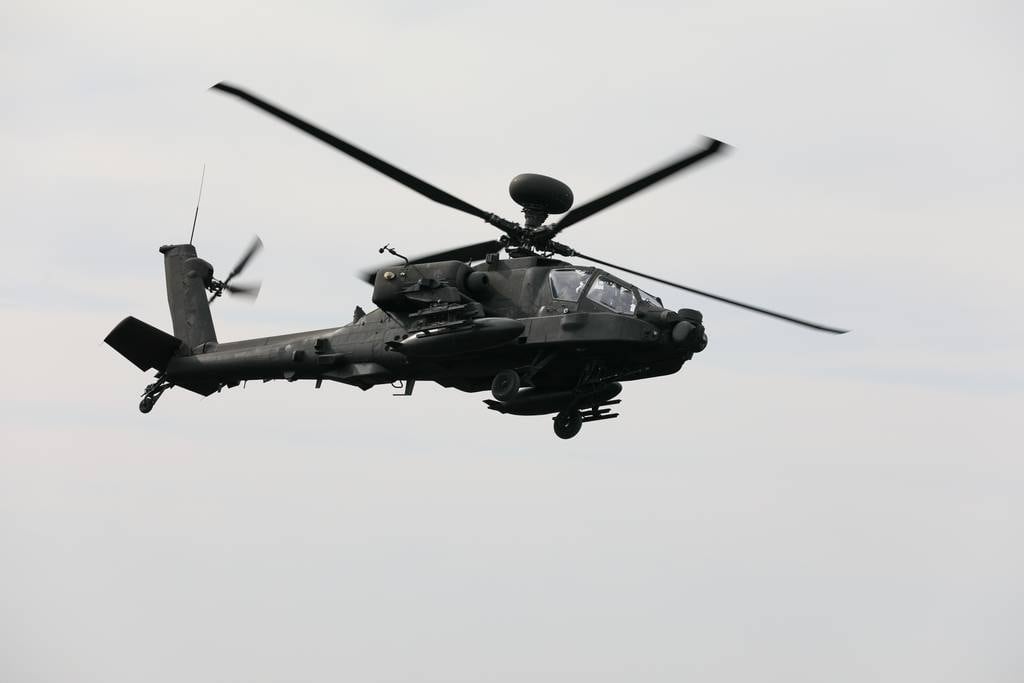
The Army has ordered an aviation “safety stand up,” with additional aviation training across the force following a dozen mishaps that have resulted in 10 fatalities in only the first six months of the fiscal year.
By comparison, the Army had 10 mishaps and 14 fatalities for all fiscal 2023. The current number of mishaps is equal to or higher than the total annual mishaps reported each year since fiscal 2016, according to Army Combat Readiness Center data.
“Over the first six months of this fiscal year we’ve seen a troubling trend with our accident rates,” Maj. Gen. Walter Rugen, director of Army aviation said on a call with reporters Wednesday. “And certainly, any loss of life is 100% unacceptable and obviously when we have [an] accident where we lose the aircraft or severely damage the aircraft, we consider that unacceptable too.”
The Army defines a Class A mishap as any that results in the loss of life or the loss of equipment totaling more than $2.5 million. The service tracks the rate of Class A mishaps per 100,000 flight hours. The current rate is 3.22, more than double the highest rate of any entire fiscal year in more than a decade, according to readiness center data.
During the “safety stand up” as opposed to a stand down, Army aviation will continue its normal operations, Rugen said. Commanders have asked for flexibility in providing the training.
“A stand up is more empowering,” he said. “We have ongoing operations that are critical that we complete. We want to empower the force at the lowest level to solve these problems.”
The training will target three broad areas, Rugen said. Decision makers, such as unit commanders, will focus on risk management and mitigation for aviation training and operations. At the operational level, the focus will target power management and spatial disorientation. Maintainers will review maintenance standards for aircraft repairs and safety checks.
“Spatial disorientation has been a trend,” Rugen said. “We get into aspects of flight where the crew must reinforce knowing where you are and where your aircraft is with respect to the ground.”
With the power management aspects, Rugen said aviators will reinforce measures taken regarding flight altitudes, higher temperatures and wind conditions.
Rugen and Brig. Gen. Jonathan Byrom, the readiness center director, did not share more specific information on causes of recent crashes or any training changes.
Aviation experts from Fort Novosel, Alabama, home to the Aviation Center of Excellence and the Army Combat Readiness Center, will visit aviation units across the service to work with units conducting the training.
A March 25 crash involving an AH-64E Apache helicopter at Joint Base Lewis-McChord, Washington was the third Apache mishap in two months. That incident resulted in two soldiers injured.
In February, there were two separate Army National Guard Apache crashes, one in Mississippi resulting in the death of two pilots, the other in Utah, which was not fatal.
That pair of crashes prompted a Guard safety stand down.
In April 2023, the service grounded its entire helicopter fleet following a double Apache crash in Alaska that killed three, a March collision between two Black Hawk helicopters that killed nine in Kentucky and a February Guard Black Hawk crash that killed two in Alabama.
Five of the 12 incidents this fiscal year remain under investigation. Mishaps in which the investigations have concluded will be used in classified briefings in the training.
“The focus is to learn from those, so we don’t repeat any of the problems we had in the past,” Byrom said.
Officials issued the safety order Wednesday morning. Active duty aviators and aviation maintainers will conduct four to six hours of training by May 10. The Guard and Reserve components have 60 days to complete the training.
Author: Todd South
Source: DefenseNews



